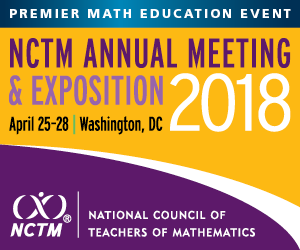In an effort to support teachers across the state with the implementation of the revised NC Math 1, 2, and 3 standards, the K-12 Mathematics team are hosting weekly webinars. Each Thursday focuses on a different course: Math 1, Math 2, Math 3, and Math Leaders.
Find out more here.
The sessions present a math task (if you register early you will get it in advance) and frames the discussion on standards, implementation, anticipating student misconceptions, and connections.

This past month I was able to participate in the Math 1 and Math 2 sessions. The Math 1 session was on Functions and we were given the
Floating Down the River task. (Which I tweaked a little. You can find the original version
here.) I really like this problem especially to discuss the key features of the functions and interpreting them in context.
This is one of my SOAP BOX concerns: the difference between
F-IF.4 and
F-IF.7. When we discuss functions it quickly becomes about the "families of functions." You know the ones I am talking about - linear, quadratic, exponential, etc.). With these functions we are able to use the symbolic representation and determine key features. For example, rewrite a quadratic into vertex form and identify the vertex. This is F-IF.7.

So what is F.IF.4? It doesn't seem like it should be the same thing. IMHO - it is not. While F-IF.7 focuses on those classical function families, F-IF.4 is broader. It includes
all functions. This includes functions I refer to as
functions that tell a story. These functions may be represented symbolically, often by a piecewise function, which is well beyond the focus of Math 1. However, it is not unreasonable for students to reason with and interpret the key features using a table or a graph.
That's why I like the
Floating Down the River task. Students are given multiple tables of values and a simple question is posed. I would expect students to do what we did during the session and graph the values. (Further commentary could be given on whether depth is positive or negative but I'll leave that up to you to decide.) Now, there are opportunities for students to discuss intervals of increase/decrease, maximum/minimums, average rate of change, and intercepts. They also have to compare and connect the events. Such as, when the water is shallow the speed increases. Can students also recognize that the distance function becomes steeper? Will they recognize why that would be occur?
There is great potential in the task which is why I am encouraging my teachers and sharing with you. Try it and see what students do with it. I guarantee learning will take place. Also, consider joining me and others at the next Math 1 webinar.
 Recently, I have been collaborating with teachers on creating "practice" exams. We've developed a NC Math 1 Practice EOC and a NC Final Exam for Math 2.
Recently, I have been collaborating with teachers on creating "practice" exams. We've developed a NC Math 1 Practice EOC and a NC Final Exam for Math 2.
















